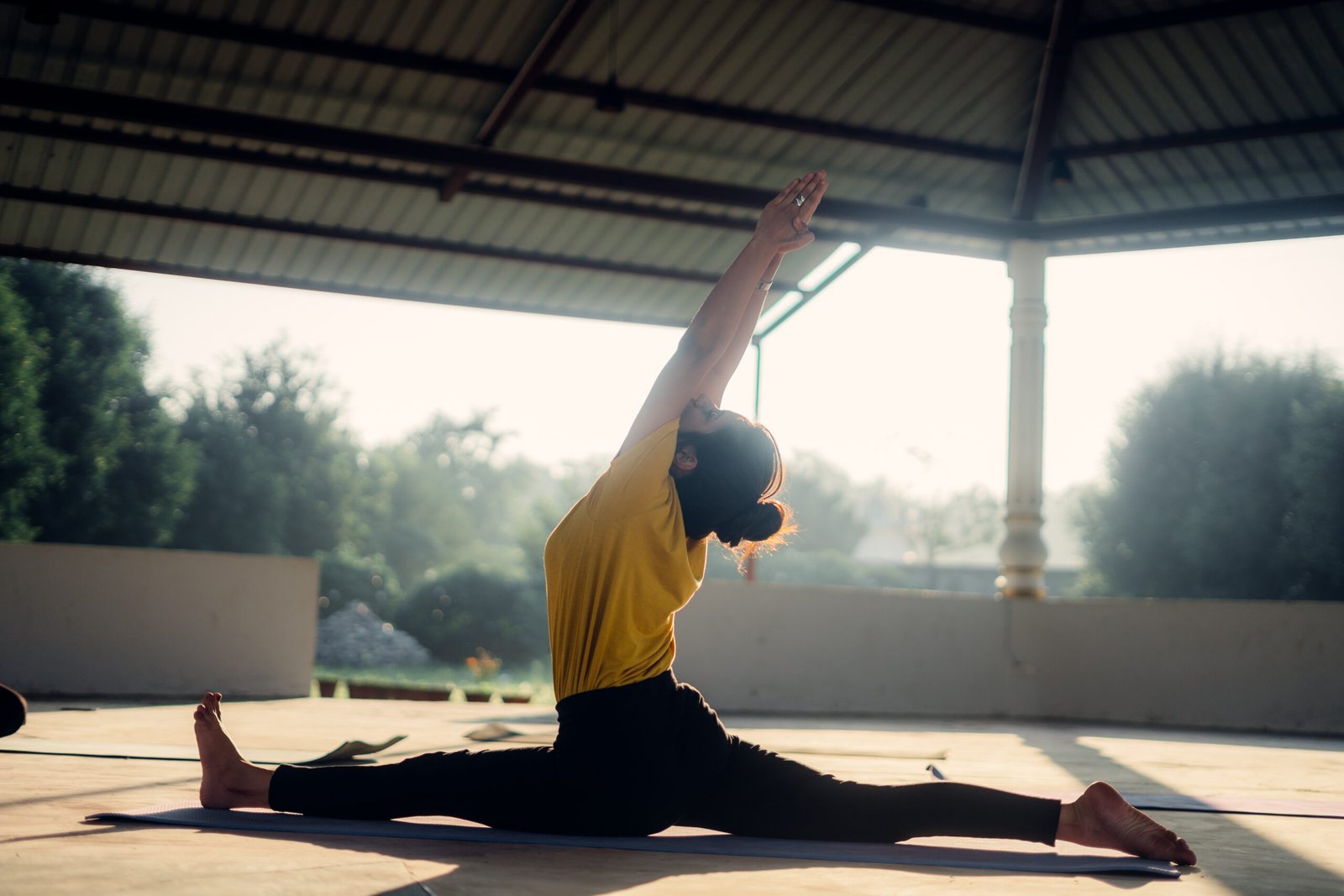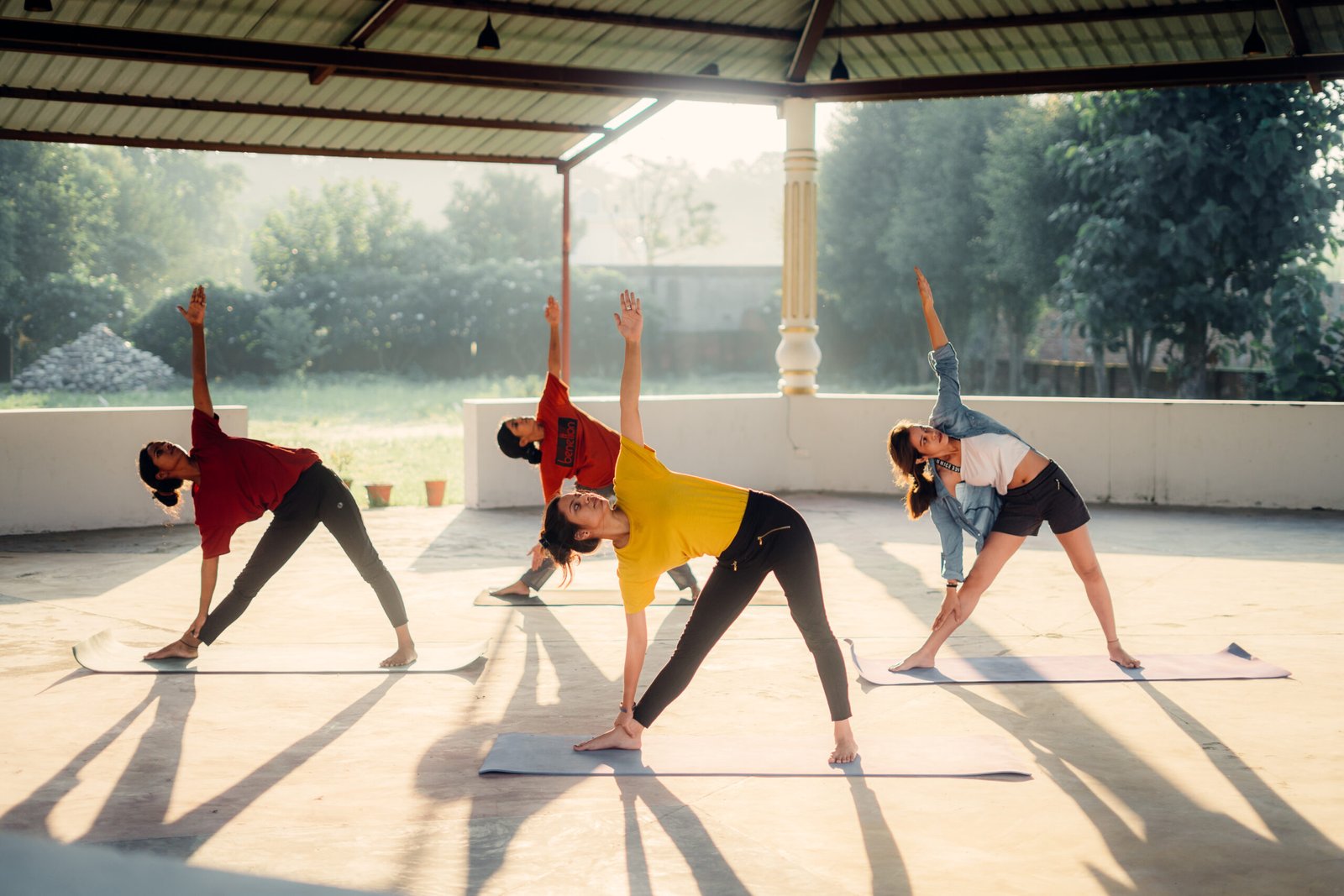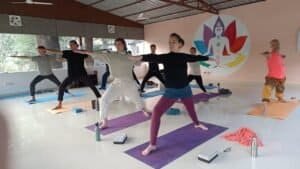Have you ever felt so low on energy that you didn’t know what to do?
or
Does your body feel stiff and does your mind have you feeling all sorts of negative emotions?
When we feel low on energy, we begin to feel like we’re not able to accomplish our goals and like we’re not good enough.
It’s important to remember that these negative thoughts only happen because your body is not functioning properly and the best way to fix this is through healthy eating and doing suitable yoga poses.
So, by eating foods with natural sugars, you’ll feel less tired and your energy levels will rise.
With yoga, you’ll be able to stretch and strengthen your muscles and your energy levels will increase as well.
If you want to feel more positive and happier, then focus on eating healthy and practicing yoga.
EFFECTS OF YOGA ON MENTAL HEALTH:
Many people are under the impression that
“Yoga is just another fad health trend that will disappear.”
However,
this couldn’t be FARTHER FROM THE TRUTH!
Yoga is a fantastic mental and physical exercise. It involves a range of techniques and yoga poses for flexibility and balance, and is great for the body and mind.
One great benefit of yoga is that it increases serotonin levels in the brain.
This means people who partake in yoga will feel more relaxed and happy as serotonin is a hormone that regulates mood and emotions.
Yoga has been shown to have significant benefits on mental health:
- Yoga decreases stress reaction
- Improves reaction to stress
- Decreases depression
- Improves cardiovascular health
- Improves physical health
- Improves mental health
- Improves focus, decreases anxiety, increases self-esteem, improves sleep, etc.
Researchers believe that this is because of consistent physical movement repeated in a variety of different postures.
These are just a few of the health benefits of yoga. If you haven’t tried it yet, why not give it a go?
You could benefit from all of the health benefits that the ancient practice has to offer.
Yoga also helps relieve anxiety and depression as it requires attention and concentration. It is also a great way to keep fit as it increases muscle strength and flexibility.
It’s a great way to enjoy the outdoors and feel closer to nature by taking a class outside.
It’s also a great way to meet and interact with people and tackle social anxiety 😉
THE BENEFITS OF YOGA ON ENERGY LEVEL:
There is a common misconception that yoga is only about flexibility and meditation.
However, yoga is a powerful tool for increasing energy levels and improving respiratory and cardiovascular health. There are several poses that can help you reach optimal health!
For example, the downward facing dog pose, also known as Adho Mukha Svanasana,
is known as a great posture for improving both flexibility and energy levels throughout the body.
It is very important for those with respiratory and cardiovascular problems, as it requires the deep inhalation of air and breathing out slowly.
There are a number of yoga poses that improve energy levels. These poses involve using your body weight to stimulate blood flow throughout your body, improving your body’s natural energy production.
The downward dog pose involves getting into a down position while lifting your body up. The cobra pose involves lowering your upper body to the ground while arching your lower back upwards. In truth, there are more yoga poses that can help you to have more energy. Working with the yoga teacher in the studio, you can find more poses that will help you to have more energy!
5 SIMPLE YET BEST YOGA POSES TO DO TO FIGHT FATIGUE:
Half Moon Pose ( Ardha Chakrasana):

BENEFITS: Get quick relief from fatigue, headache, backache, and so much more.
STEPS:
Stand straight, bend and touch the ground without bending your knees.
Move your upper body to face the left while moving the left arm to make a 180 degree with the right arm.
Now gently move your left leg 90 degree to your right leg.
Big Toe Pose (Padangusthasana):

BENEFITS: Stretches the body and helps reduce pain and fatigue.
STEPS:
Stand straight on the surface with feet about 6 inches apart.
Exhale and bend forward. Your legs should be completely straight.
Hold the toes with your fingers. Keep your elbows straight and stretch your front torso downwards.
Hold the pose for 60 seconds.
Downward Facing Dog Pose ( Adho Mukha Svanasana):

BENEFITS: Provides the much needed stretch to your shoulders, arms, and legs and releases all the stress.
STEPS:
Place your knees on the surface. Place your hands parallelly under your shoulders and knees parallel to your waist.
lift the knees off the surface and try to balance your body on your toes.
Slowly start to straighten your legs and form into an inverted “V” pose.
Raise your hips upwards towards the roof and align your head with the upper arms.
Hold this pose for 10-20 breaths.
Cat/ Cow pose():

BENEFITS: Relaxes the spine, improves digestion, relieves back pain.
STEPS:
Start by balancing your body on knees and hands mataining a fixed distance amongst them.
INHALE and lift up your hips, let your belly lower, push the shoulders back and face forward.
EXHALE and move your hips under, round the spine, and let the head face downwards. Repeat this 5-6 times moving with your breath.
Dhanurasana (bow pose):

BENEFITS: It does strengthening of back and abdominal muscles, tones leg and arms, makes the spine flexible.relieves menstrual discomfort, helps reduce constipation.
STEPS:
Lie on the ground on your stomach, with legs joined together and hands parallel to waist.
Touch your hips by your foot by bending them.
Now hold your ankles with your hands, face balanced by chin facing forward.
Now stretch your legs so that your arms are stretched to their max, while forming an archon the back.
How to hold yoga poses correctly?
The main goal in holding a yoga pose is to get into a position that is relaxed and also comfortable for you, while also engaging your core and other muscles.
In order to do this, you need to be able to feel what your body is doing.
If you’re unable to do this, you might be forcing yourself into a position that is not completely comfortable or feeling it at all. Take a deep breath and loosen up. Your muscles need to be relaxed for this to happen.
One of the most common mistakes beginners make is attempting to hold yoga poses for too long.
It is important to know how long to hold poses, but yoga stretches are about experiencing the stretch.
You should never feel pain. When attempting to hold poses, take breaks every few breaths (or at least every 10-20 seconds). This will help you hold poses correctly without overexerting yourself
There are infinite ways to hold poses in yoga, so here are some suggestions for you!
If you’re struggling to hold a pose, use props like pillows or blankets to help yourself.
This will allow you to focus on your breathing and strengthen your arms and legs. When holding a pose for longer than 30 seconds, try to breathe slowly and lightly.
Holding your breath for too long can cause light-headedness, so don’t forget to breathe! Also remember that less is more. You don’t have to hold the pose for the full amount of time that it’s suggested. Start off small and work your way up!
With a little patience and a lot of yoga, you’ll be a master of poses in no time!
CONCLUSION:
Yoga is one of the best ways to de-stress and relax. It is also a great way to improve your health and energy.
For those of us who work long hours or do not get enough sleep, yoga is a great way to help us fight our fatigue.
We hope this blog was helpful and we encourage you to check out our website for more great tips and information on how to live a healthy and active lifestyle. Please contact us anytime – www.tarangyogaashram.com
About the author:




